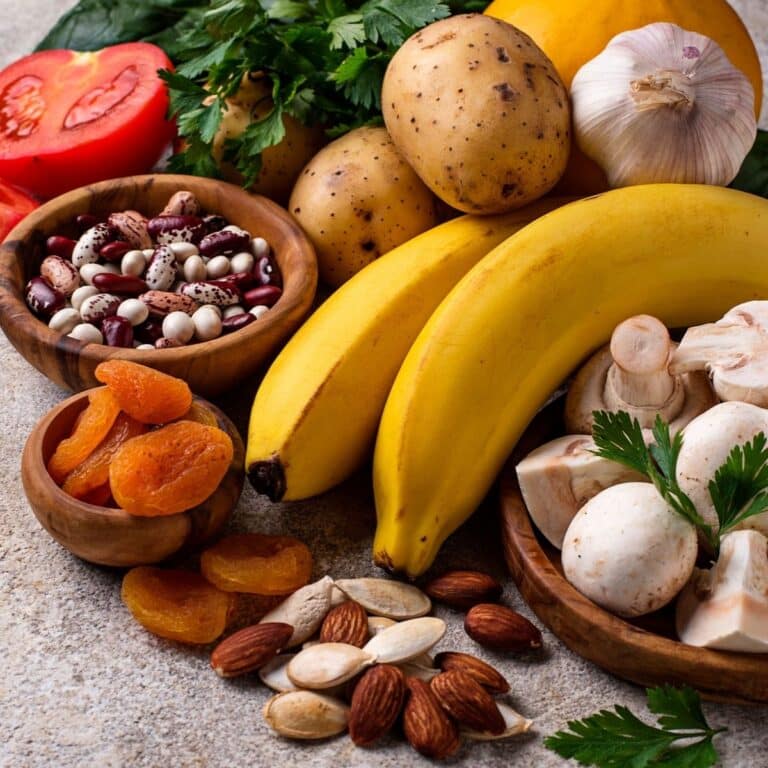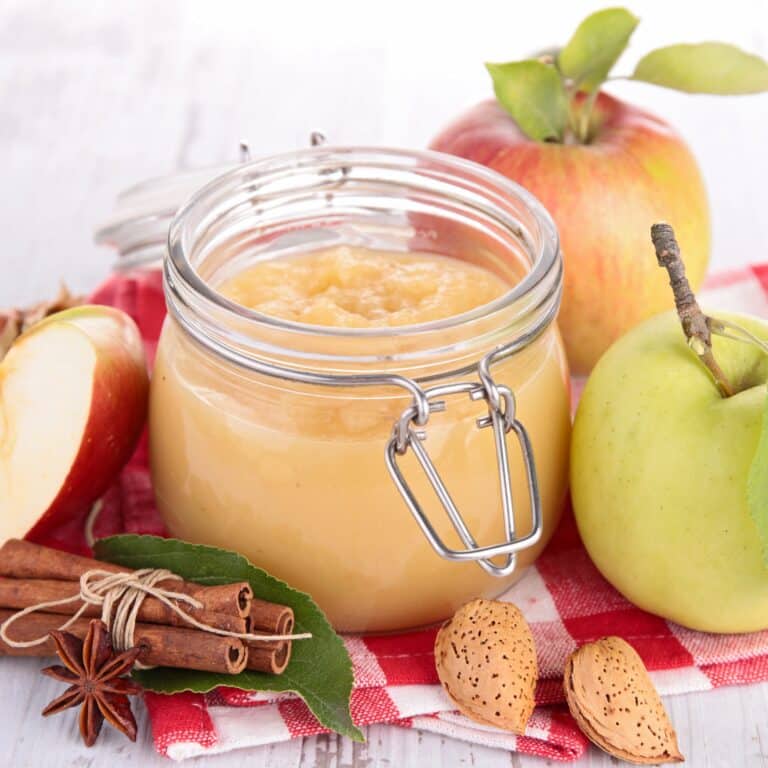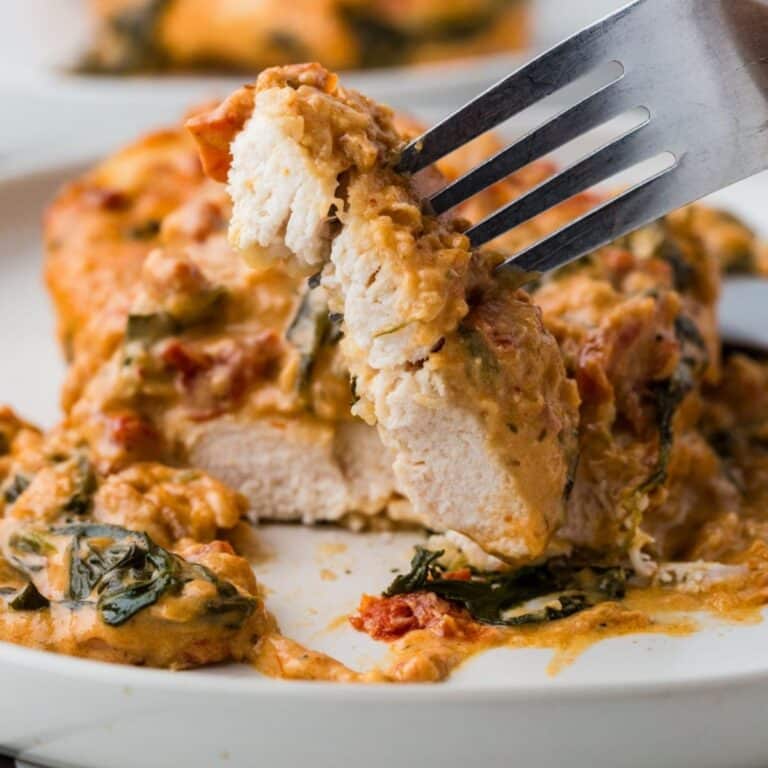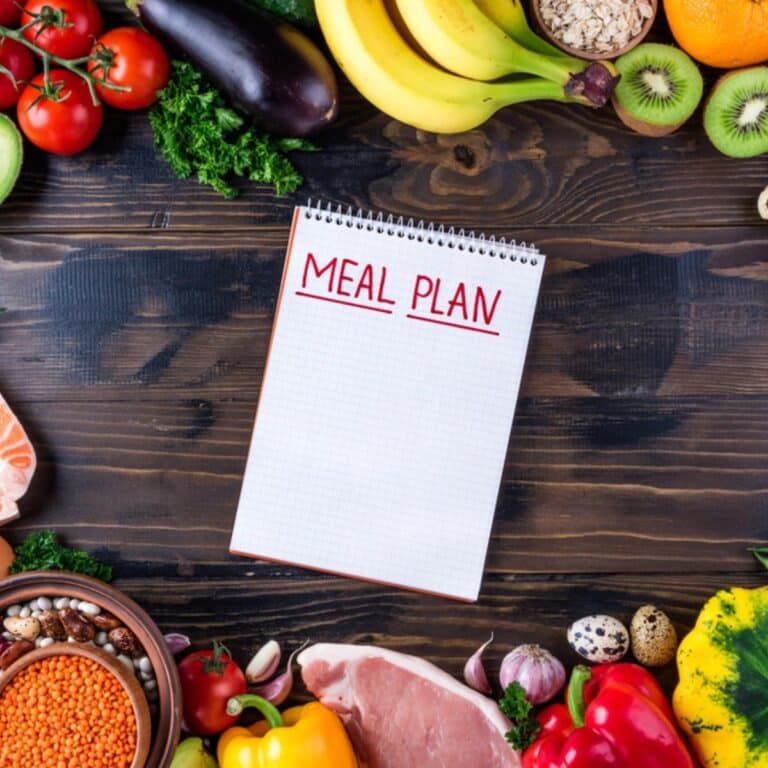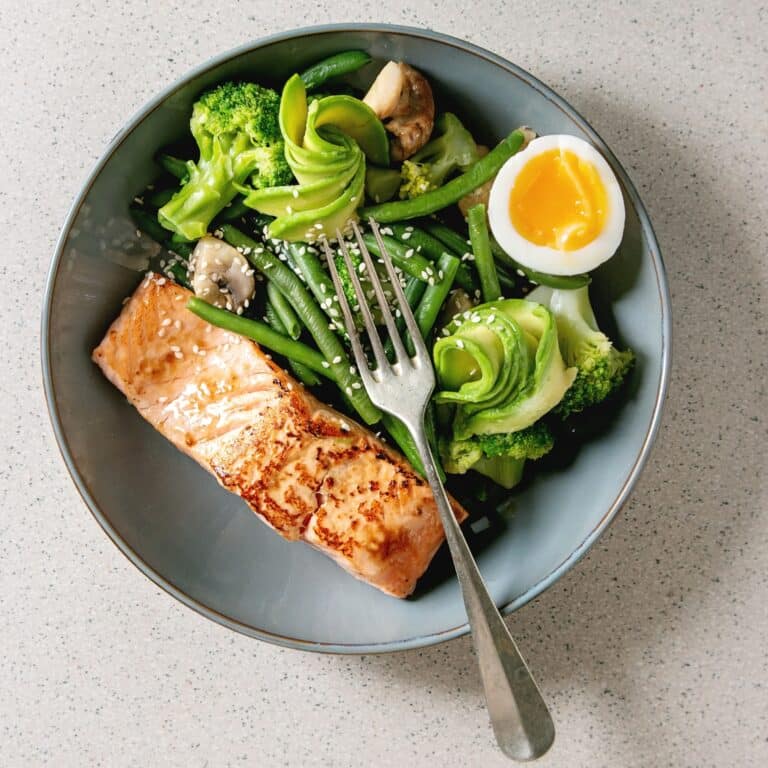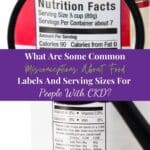Reading Nutrition Facts Labels With CKD
If you have chronic kidney disease (CKD), it can be overwhelming to navigate nutrient labels while grocery shopping. But don't worry, with the right knowledge on food label, you can make informed choices that support your kidney health.
This article will guide you through everything you need to know about reading nutrient listing with CKD.
Firstly, we'll cover how to understand serving sizes and why they matter for those with kidney disease. We'll then discuss the importance of potassium information on food labels, as well as sodium limits for kidney disease patients.
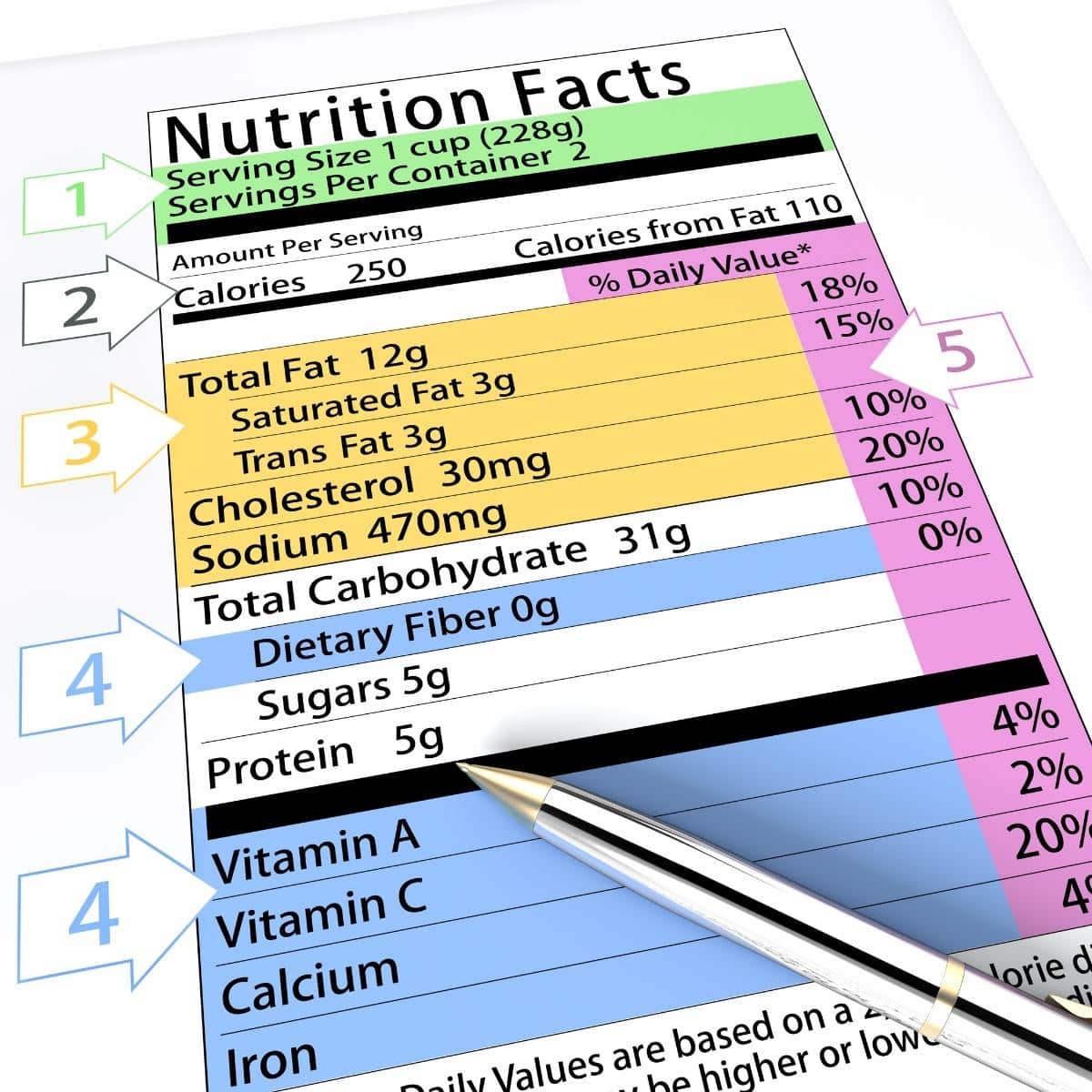
You'll also learn about total fat and a low-fat diet, total carbohydrates and fiber intake, protein in a balanced diet, hidden phosphorus in ingredients list, fluid intake recommendations, and even some delicious kidney-friendly recipes (kidney disease diet recipes).
With this comprehensive guide from Renal Diet HQ, you'll have all the tools necessary to make healthy food choices that support your overall health and wellbeing.
Let's get started!
Jump to:
- Key Takeaways
- Understanding Serving Sizes
- Importance of Potassium Information
- Sodium Limits for Kidney Disease Patients
- Total Fat and Low-Fat Diet
- Total Carbohydrates and Fiber
- Protein in a Balanced Diet
- Hidden Phosphorus in Ingredients
- Fluid Intake and Kidney-Friendly Recipes
- FAQs for Nutrition Fact Labels
- Reading Nutrition Facts Labels Can Help Manage Your Kidney Disease
Key Takeaways
- Pay attention to serving sizes, which may differ from a kidney diet plan. Consult with a kidney dietitian about appropriate serving sizes.
- Look for foods with lower levels of sodium, as kidney disease patients should look for products with no more than 6 to 10% of the daily value for sodium at most.
- Check the ingredient list for hidden sources of phosphorus, and avoid foods with phosphate additives and salt listed in the first few ingredients.
- Understand the importance of potassium information on food nutrition labels for people with kidney failure, and limit potassium intake to no more than 200mg per serving.
For More Recipes and Ideas --->> Get Your Free Meals and Recipes That Are Perfect for Pre-Dialysis Diets, Pre-Dialysis with Diabetes, or Dialysis Diets.
Understanding Serving Sizes
Let's talk about understanding serving sizes, it's an important aspect to consider when reading nutrition facts labels (read labels carefully as a kidney patient) with chronic kidney disease (CKD). Portion control is vital for managing kidney disease, and the serving size listed on the food packages labeling can help you keep track of how much you're consuming.
It's essential to remember that serving sizes may differ from what your kidney diet plan recommends, so consulting with a renal dietitian is crucial. Caloric intake is another factor affected by serving sizes. The larger the portion, the more calories you consume, which could lead to unwanted weight gain or other health issues.
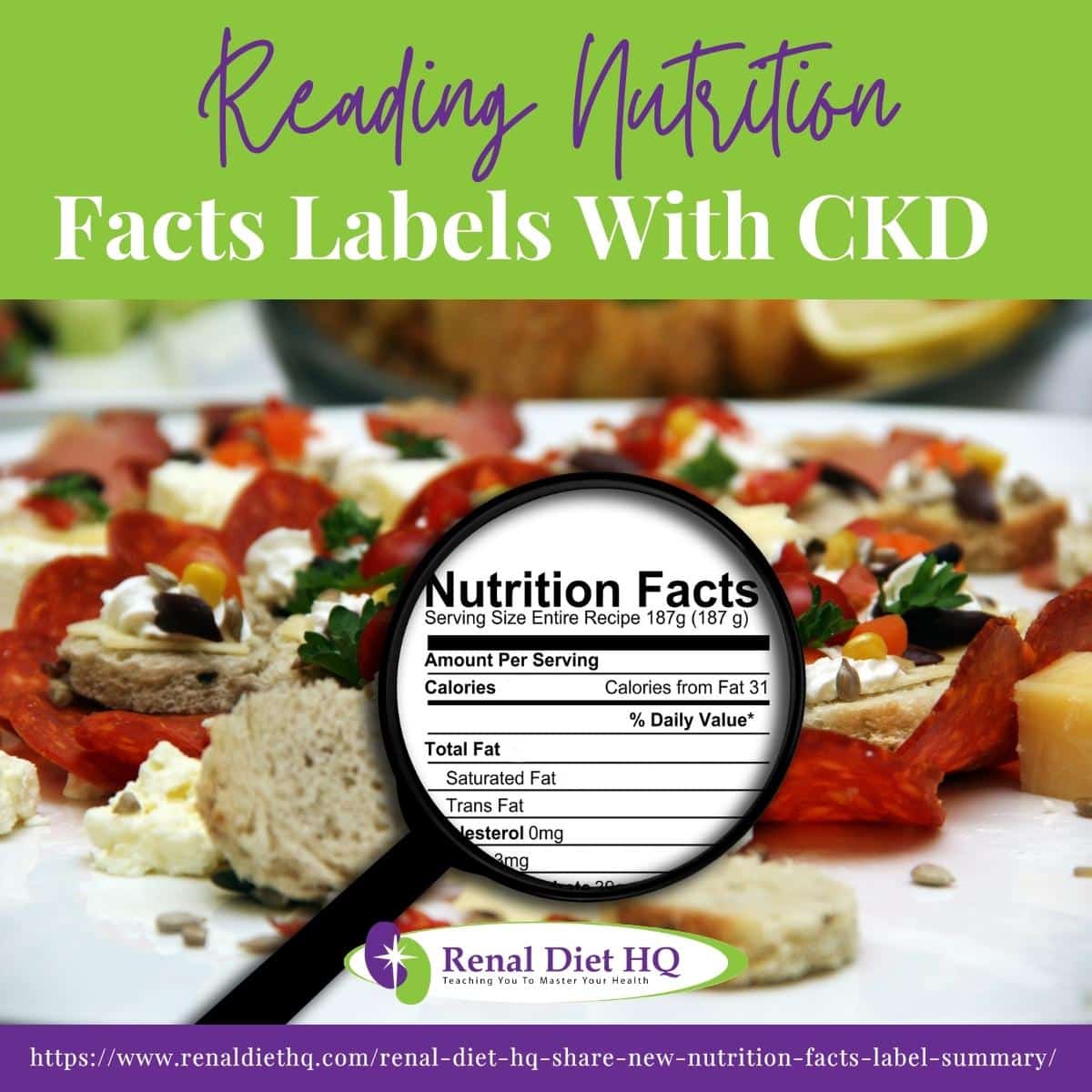
Understanding serving sizes can also help you identify nutrient-dense foods that provide optimal nutritional value per calorie consumed. This information is particularly helpful for those seeking to manage their caloric intake while ensuring they get all their necessary nutrients. Understanding serving sizes can assist in making food substitutions without compromising your dietary needs.
By comparing similar products' serving sizes and nutritional values, you can choose options that are lower in sodium, potassium or phosphorus levels while still meeting your daily nutrient levels.
Nutrition facts panel reading tips include looking at both the actual amount of each nutrient in a single-serving container as well as calculating how much percentage of daily value it contributes towards overall daily consumption goals.
In summary, understanding serving sizes plays a critical role in maintaining optimal nutrition levels needed for CKD management and prevention of further complications associated with this disease state.
Importance of Potassium Information
You need to pay attention to the potassium content on foods nutrition labels if you have kidney disease, as it's an important nutrient that can impact your health. Potassium helps regulate fluid balance, muscle function, and blood pressure. However, when your kidneys aren't functioning properly, high levels of potassium in the blood can be dangerous and even life-threatening.
Patients living with CKD are at risk for having potassium levels that are either too high or too low. To ensure you're getting enough potassium but not too much, it's important to know the recommended potassium intake for individuals with kidney disease. A daily intake of 2,000-3,000 mg of potassium is recommended for people with kidney disease on a low-potassium diet.
However, this may vary depending on factors such as age and stage of kidney disease. Look for low-potassium foods with no more than 200 mgs of potassium per serving.
There are many high-potassium foods that should generally be avoided while on a low-potassium kidney-friendly diet. Some examples include sweet potatoes, spinach, bananas, avocados, and salmon.
Incorporating more low-potassium meals into your diet doesn't have to mean sacrificing taste or variety. There are many delicious meal ideas available that incorporate low-potassium ingredients such as grilled chicken with roasted green beans or a lettuce salad with cucumber and cranberries. Don't forget about seasoning options either, herbs such as rosemary and thyme add flavor while also being suitable for a low-potassium diet (grilled foods for CKD).
For those who struggle to meet their recommended intake through diet alone or have very low levels of potassium in their blood due to medication use or other reasons, high-potassium foods or potassium supplements may be an option. Be sure to talk to your healthcare provider before starting any new supplement regimen.
By paying attention to the levels of nutrients listed on the nutrition labelling and incorporating more high-potassium foods into your meals, you can help support healthy kidney function and overall well-being.
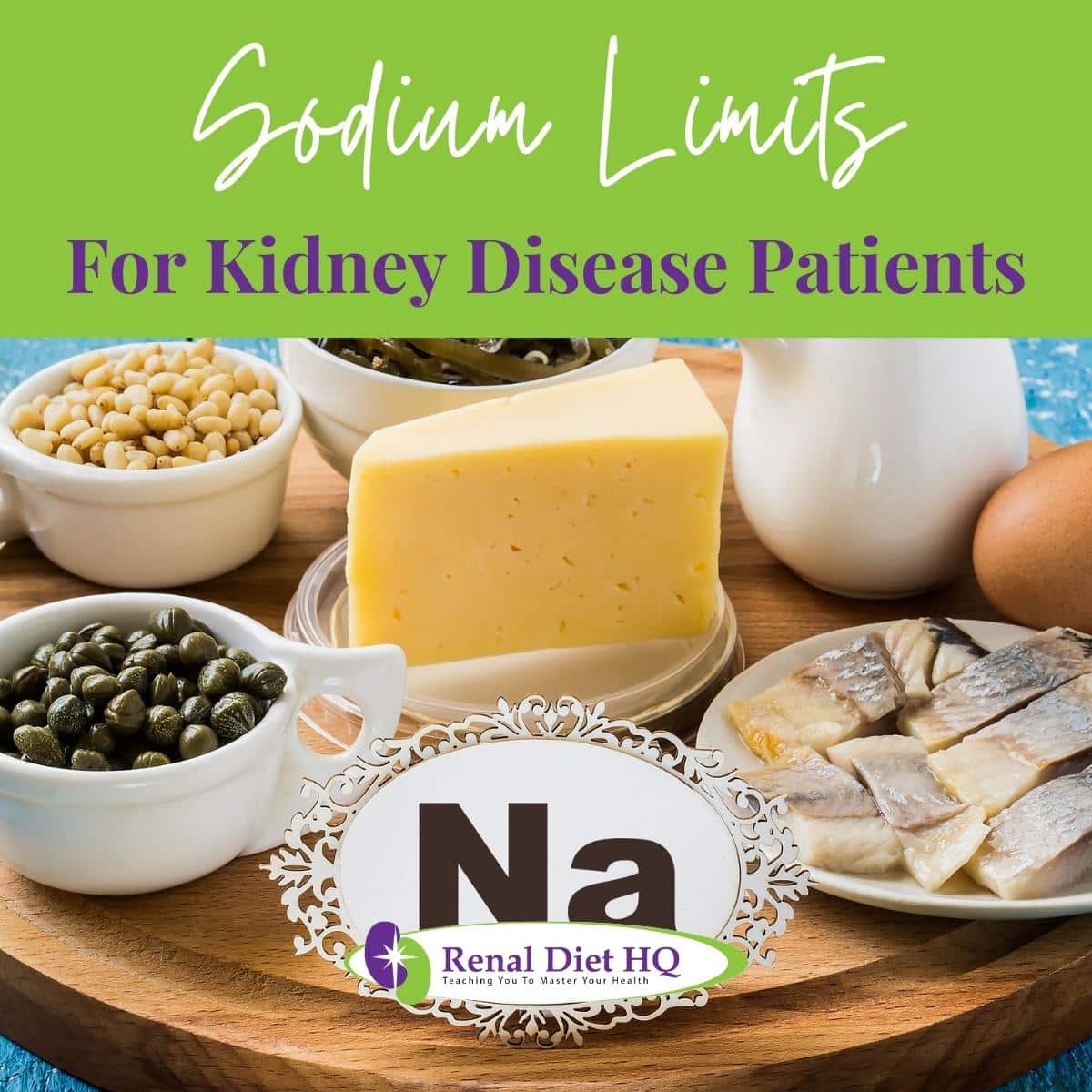
Sodium Limits for Kidney Disease Patients
When it comes to managing your kidney disease, it's essential to keep an eye on your sodium intake. High blood pressure and fluid retention are common in people with kidney failure, and consuming too much salt can exacerbate both. The American Heart Association recommends that most adults consume no more than 2,300 milligrams of sodium per day, but for those with kidney disease, the limit may need to be further lowered to 1,500 milligrams.
One way to reduce your sodium intake is to experiment with low-sodium seasoning blends or salt substitutes. These products use herbs and spices to add flavor without adding extra salt. However, some people find them unappealing or too expensive.
Another option is to look for foods labeled 'low-sodium' or 'no added salt.' Be sure to read the nutrition facts label carefully, even foods marketed as healthy options can be high in sodium. Look for products with no more than 6-10% of the recommended daily value of sodium.
It's also important to stay hydrated when you have kidney disease. Drinking enough water can help flush excess wastes out of your system and prevent dehydration, which can lead to a host of other health problems. Talk to your doctor or renal dietitian about how much fluid you should be drinking each day based on your individual needs and medical history (water rich foods).
Total Fat and Low-Fat Diet
Reducing your total fat intake is crucial for managing kidney disease, and a low-fat diet can help you achieve this goal. However, fats are not created equal, and while some types of fat can be harmful to people with kidney disease, others may be beneficial. Foods high in healthy fats include nuts, seeds, fatty fish like salmon or tuna, olive oil, peanut butter, and tofu.
Healthy fats are an excellent source of energy and nutrients that are essential to maintaining good health and may promote kidney health. The other benefits of healthy fats include reducing inflammation, improving brain function and heart health while decreasing the risk of developing chronic illnesses such as diabetes and heart disease.
Cooking techniques for low-fat meals include baking or grilling instead of frying food in oil or butter. Low-fat substitutes like nonfat Greek yogurt or applesauce can replace ingredients like sour cream or oil in recipes.
Paying attention to the amount and type of fat you consume is essential to managing kidney disease effectively. Incorporating healthy sources of fat into your diet while being mindful of portion sizes will improve your overall well-being.
Consulting a renal dietitian for guidance on how to navigate a low-fat diet can take the guesswork out of meal planning while ensuring that you receive proper nutrition (meal planning for families with CKD).
Total Carbohydrates and Fiber
Incorporating fiber-rich foods into your diet can help manage kidney disease by promoting digestive health and regulating blood sugar levels. Total carbohydrates include both dietary fiber and sugars, which can affect blood glucose levels. Carb counting is important for those with diabetes or pre-diabetes. The glycemic index measures how quickly a carbohydrate-containing food raises blood sugar levels.
To ensure you are getting enough fiber, aim for at least 25 grams per day for women and 38 grams per day for men, according to the USDA. Fiber sources include fruits, vegetables, whole grains, legumes, nuts, and seeds. Some people may find it difficult to get enough fiber through their diet alone and may benefit from fiber supplements.
When shopping for kidney-friendly foods, look for products that have a good source of fiber with at least 3-5 grams per serving of food. Sugar substitutes such as stevia or sucralose can be used in moderation to sweeten foods while lowering carbs and calories. Remember to always read the nutrition facts label carefully and consult with a renal dietitian about your recommended nutrient needs.
| High-Fiber Foods | Serving Size | Fiber Content (grams) |
| Brussels sprouts (raw) | 1 cup | 3.4 |
| Black beans (cooked) | ½ cup | 7.5 |
| Broccoli (cooked) | 1 cup chopped | 5 |
| Apples | 1 cup chopped | 3 |
| Raspberries (fresh) | 1 cup | 8 |
| Quinoa (cooked) | 1 | 5.1 |
Incorporating high-fiber foods into your diet can provide numerous benefits beyond managing kidney disease including reducing risk of heart disease and stroke. By focusing on good sources of dietary fiber while watching carb intake using techniques like carb counting or monitoring the glycemic index, you can help maintain stable blood sugar levels.
Remember to always read the nutrition facts label and ingredient list carefully for hidden sources of sugar or phosphorus intake. By working with a renal dietitian, you can create a personalized eating plan that meets your specific nutrient needs while also promoting overall health.
Protein in a Balanced Diet
To maintain a balanced diet, you should aim to include adequate amounts of protein from a variety of sources such as lean meats, poultry, fish, low-fat dairy products and plant-based options like legumes and tofu. Balancing macronutrients is crucial for individuals with CKD because it can help manage symptoms and prevent further complications.
In general, people with CKD may require more or less protein depending on their stage of kidney disease. Here are three important points to keep in mind when considering protein intake:
- Protein requirements vary: Individuals with early-stage CKD may need more protein than those in later stages because they are still able to filter waste products effectively. As the disease progresses, however, excess protein can be harmful to the kidneys. It's essential to work with a renal dietitian to determine your individual protein needs.
- Plant-based proteins are a great option: Plant-based proteins like beans and lentils are low in fat and high in fiber which makes them valuable additions to a renal-friendly diet. They also contain less absorbable phosphorus compared to animal-based proteins which can be beneficial for those with CKD.
- Be cautious about supplements: Protein supplements like powders and shakes should be used under the guidance of a healthcare professional because they can contain high levels of minerals that can damage the kidneys if consumed in excess. It's always best to meet your protein needs through whole foods whenever possible.
Hidden Phosphorus in Ingredients
Watch out for hidden sources of phosphorus in your food, as they can be harmful to your kidneys. It’s also important to keep in mind that the nutrition facts labels don’t always list the phosphorus present in a serving.
To avoid consuming excess phosphorus, it's important to read ingredient lists carefully. Look for words that contain "phos," such as phosphoric acid or sodium hexametaphosphate. Additionally, avoid processed foods and opt for fresh fruit and vegetables instead. These whole foods are typically lower in their levels of phosphorus and other harmful minerals.
Nutrition education is key to understanding how to properly manage kidney disease through diet. By learning about hidden phosphorus sources and how to read labels effectively, you can make informed choices that promote kidney health. Consult with a registered dietitian who specializes in renal nutrition for personalized guidance on managing your condition through diet.
| Phosphorus Sources | Examples |
| Additives/preservatives | Sodium phosphate, calcium phosphate |
| Dairy products | Milk, cheese |
| Drinks | Beer/ale, cocoa |
| Protein | Beef/chicken liver, organ meats, sardines. |
Fluid Intake and Kidney-Friendly Recipes
Now that you know how to spot hidden phosphorus in food ingredients, let's talk about fluid intake and kidney-friendly recipes. As someone with CKD, it's important to keep track of your fluid intake as well as finding ways to stay hydrated without overloading your kidneys.
Fluid intake tips include drinking small amounts throughout the day rather than chugging large volumes at once. Sipping on water or other low-sodium drinks like herbal teas can also help with hydration. Avoiding high-sodium foods and using herbs and spices instead for flavor can reduce thirst.
When it comes to meal planning, incorporating flavorful drinks like infused waters or homemade smoothies can add variety while also being kidney-friendly. Recipe suggestions include a cucumber and mint infused water or a spinach and banana smoothie. Consulting with a renal dietitian can also provide personalized recommendations for staying hydrated while maintaining a kidney-friendly diet.
By implementing these hydration strategies and adding kidney-friendly drinks into your daily routine, you can ensure proper fluid balance while still enjoying delicious beverages. Don't forget to consult with your healthcare team for personalized advice on managing your CKD through nutrition.
FAQs for Nutrition Fact Labels
Misconceptions about food labels and serving sizes for patients with kidney disease are common. Many believe that salt alternatives or flavorings can be used freely, but it's important to remember that these still contain potassium and must be used in moderation.
Some may think that nutrient intake should be restricted, but in reality, a balanced diet is crucial for optimal health. Fluid restriction is also important, but there are creative ways to limit intake while still enjoying flavorful meals.
It's essential to practice label reading and follow a kidney disease diet plan to ensure proper nutrient intake and potassium balance. With the right knowledge and food options, maintaining a healthy lifestyle with CKD is possible.
To ensure dietary balance, CKD patients need to incorporate low potassium options into their diet while also utilizing appropriate cooking techniques and practicing portion control.
Some low potassium options include apples, berries, cucumber, green beans, cauliflower, and cabbage. Leaching by soaking vegetables in warm water can help reduce their potassium content
Portion control is key, so make sure to measure out servings and avoid going back for seconds. Nutritional supplements may also be helpful in meeting nutrient needs without exceeding recommended potassium intake levels. Consult with a renal dietitian to develop an individualized plan that meets your specific nutritional needs while managing your potassium intake.
If you're looking to flavor your food without using table salt, there are several herbal alternatives that can be used. Citrus fruits like lemon and lime can add a tangy taste, while spices and herbs like thyme, basil, and oregano can add a savory flavor. Vinegar-based dressings are also a great option for adding flavor without the sodium.
Low sodium seasoning blends are available at most grocery stores and can be used in place of traditional seasonings. It's important to talk to your dietitian about incorporating these options into your kidney-friendly diet plan.
If you have CKD and you're looking for high-protein sources, there are a few options you can consider. Good protein sources include lean meats like chicken, fish, or turkey, egg whites, low-fat dairy products like milk and yogurt, beans and legumes, tofu, or tempeh. However, it’s important to not exceed your recommended protein intake, as this can cause waste to build up in your body.
When cooking these proteins, it's important to choose healthier methods such as grilling or baking instead of frying. Portion sizes should also be monitored to ensure that you don't exceed your daily protein requirements.
Meal planning with a renal dietitian can help ensure that you're getting enough protein while still staying within the guidelines of your kidney-friendly diet.
In some cases where additional supplementation is necessary to meet protein needs, your healthcare provider may suggest adding in a protein powder supplement.
To ensure you're getting enough amounts of nutrients while not exceeding your recommended caloric intake with CKD, there are several strategies you can implement.
First, focus on nutrient-dense options such as lean proteins, fruits and vegetables, and whole grains. These foods provide essential vitamins and minerals without adding excess calories to the body.
Additionally, practice portion control by measuring out servings and limiting high-sodium foods (portion control for CKD patients).
Finally, look for low-sodium alternatives to your favorite foods and be mindful of hidden sources of sodium in pre-packaged foods.
By incorporating these tips into your diet, you can maintain a healthy balance of nutrients while managing your caloric intake with CKD.
Reading Nutrition Facts Labels Can Help Manage Your Kidney Disease
Congratulations! You've now got a comprehensive understanding of how to read nutrition facts labels with chronic kidney disease (CKD). Armed with this knowledge, you can confidently make informed choices about what foods to eat and avoid (fast food items to avoid with ckd).
Remember to pay close attention to serving sizes, potassium and sodium information, total fat and carbohydrates, protein levels, hidden phosphorus in ingredients, and fluid intake. By incorporating kidney-friendly recipes into your diet, you can maintain a balanced diet while still enjoying delicious meals.
It may take some time to get used to reading nutrition facts labels with CKD, but it's worth the effort. With practice, you'll become more comfortable navigating food labels and making informed choices that support your kidney health.
By taking control of your diet and lifestyle habits today, you're investing in a healthier future for yourself tomorrow.





